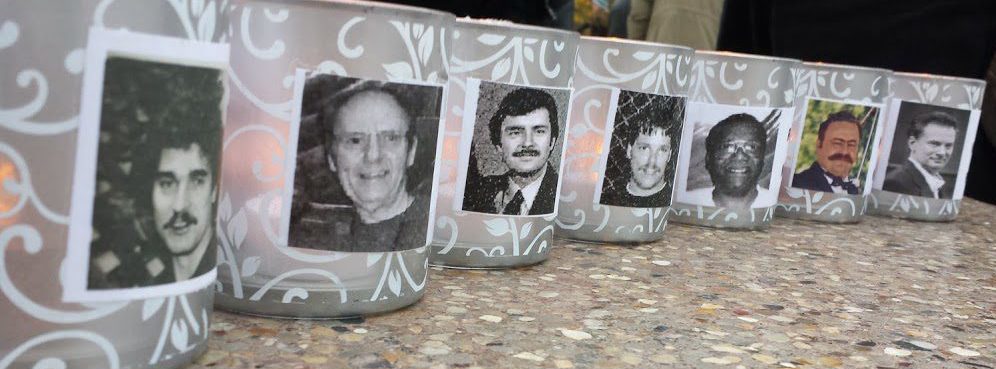“Every child must be made aware…
Every child must be made to care…
Care enough for his fellow man…
To give all the love that he can…”
–Peace on Earth/Little Drummer Boy lyrics (By Bing Crosby and David Bowie)
I’ve always been fond of this verse. Pick any time in our history and it rings as true as the day. These days, as I strive to regain composure from the devastating blow handed down from the U. S. court system earlier this year to Keith Kutska, Michael Hirn, Reynold Moore, Michael Johnson, and Dale Basten; five men victimized by a corrupt system for close to twenty-two years for a crime they did not commit, I’m reminded of Keith’s spirited and powerfully truthful words in his forward for my book…
“…an innocent person can choose to maintain his own integrity. It is one thing the system cannot take.” – Keith M. Kutska

October 29, 1995: Keith (in background) with his attorney on the front page of the Green Bay Press-Gazette
We all have a choice in how to live meaningful lives no matter where circumstances take us. I say, let us never disregard the powerful messages coming from the unfortunate victims of our criminal justice system who’ve been silenced but have still found the fortitude to teach integrity through example.

Homemade Christmas card from an innocent incarcerated person
As a show of support for a handful of these victims, I write letters to let them know they are not forgotten. During this holiday season, I’m sharing one such letter I wrote recently in an attempt to keep alive, the one thing that can elevate an individual’s spirit…HOPE. Because the absence of hope can completely shatter a person’s sense of identity and in some cases, a will to live. Without hope, all that is left is despair. And isn’t there enough of that in this world already?
Dear —–, 12-28-2017
This is a bit late but I’m writing to wish you Merry Christmas. I’m a social justice advocate who became aware of your case through social media. I’m saddened about your situation but grateful for the support you have to carry you through the darkness. I have a number of friends who’ve been victimized by corruption within our judicial system. Some have been exonerated while others have not. I’ve learned so much about life from all of them, especially about appreciation for what I have and how easily a wrongful conviction could affect my personal life.
For the past eight years my focus has been from an outsider’s point of view of a wrongful conviction case involving six Wisconsin men. They were sentenced in 1995 to life in prison for an alleged murder that took place in 1992. I didn’t know the men or their families or even about the case until my sister, Clare, a long-time resident of Green Bay, brought it to my attention in 2009. She had met someone co-writing a book that documents all of the facts in the case. She also knew one of the six men and never believed he was party to a murder.
I eventually read the book and decided to get involved because of how ludicrous the whole scenario sounded. It was clear to me that this was bullying by the law enforcement community. Like yours and so many other cases there was no credible evidence or eyewitnesses to positively confirm that a murder took place. The entire investigation was about building a case around a suspect rather than allowing the evidence to lead them to the truth. I wrote my own book about my observations of what I saw and the similarities of this case with many other wrongful conviction cases. As a non-legal person I also disclosed my personal mission and the process of finding new legal representation for these men and why that was my only option moving forward. I self-published this year and actually won a national book award soon after. Unfortunately, although I found amazing attorneys to reopen the case, the legal process has gone south due to politics and the established ties to the case in the higher WI courts. However, one of the six men was exonerated in 2001 which gives me hope that the others also have a shot. So my intent to find similar relief for them remains steadfast.
On this journey I’ve learned the importance of writing to the men. I understand how much it means to anyone behind bars, especially those incarcerated for crimes they did not commit, to have a link to the ‘outside’ world. So here’s my contribution to the writing campaign set forth by those representing you. It is also a tribute to the vast need for more folks to get involved in this issue or something equally important rather than merely complaining about the ills of the world. I am hopeful that this and the message of how destructive wrongful convictions are to our society also becomes an adequate example to follow for those who read my book.
Best of wishes to you, my friend.
Joan
All the best to all of you this holiday season and throughout the New Year!



